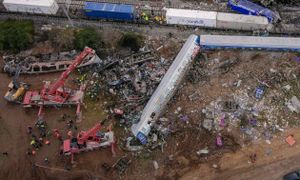California is taking significant steps to address the growing threat of wildfires with the release of updated risk maps by the California Department of Forestry and Fire Protection, known as CAL FIRE. These new maps, the first major re-evaluation since 2011, showcase alarming changes across the Bay Area and other regions, highlighting areas now classified as having very high fire hazard severity.
Announced this week, the updated maps categorize regions based on data collected over the past 15 years, marking the state’s commitment to reassessing the changing dynamics of fire risks. Historically, the maps serve as a guide for homeowners, insurance companies, and local governments on where fire safety measures are needed the most. CAL FIRE’s objective is clear: to protect lives, homes, and communities from devastating wildfires.
According to Governor Gavin Newsom, the revisions to the maps are substantial. “We are living in a new reality of extremes. Believe the science – and your own damn eyes: Mother Nature is changing the way we live and we must continue adapting to those changes,” he stated. Governor Newsom stressed the updated maps would expand fire safety regulations, potentially adding 1.4 million acres to areas requiring stricter fire safety measures. More than 360,000 of those acres are located along California's northern coast.
The updated maps reveal stark changes, particularly for homeowners. Regions now considered to be at very high risk, especially those near hillsides and areas prone to dry winds and vegetation, will need to adhere to stringent safety codes. This includes clearing flammable materials and following updated landscaping guidelines, often referred to as creating defensible space. Homeowners must remove any flammable items within five feet of their structures to reduce fire risks.
"Hazard maps are really looking over a 30 to 50-year period," Chris Bachman, fire marshal with Contra Costa Fire Protection, explained. He emphasized the importance of updating these maps to reflect current conditions and risks. Areas considered very high risk encompass hillsides surrounded by dry grass, often exacerbated during California’s hot summer months.
The new maps particularly highlight Sonoma County, where nearly 7,600 acres are now deemed at risk compared to just 11 acres noted during the last assessment. This staggering increase prompts urgent action among homeowners as they confront the realities of their living environments. Other updates reflect changes in Oakland, where certain areas have been downgraded to moderate risk, bringing some relief to its residents.
CAL FIRE has encouraged local governments to study these new maps before they are finalized later this year. They will have until March 24 for the final map rollout across Southern California. During this period, community meetings and education sessions will be held to inform residents about the changes and what they mean for daily living.
Residents like Brian O'Shea of Orinda have already begun to assess their homes' preparedness following the release of the revised maps. “I see it as a call to action,” O'Shea said. He shared how his family has proactively maintained their yard and home to align with fire safety guidelines. “We’ve trimmed back a lot of the trees adjacent to our house. Really, just trying to keep as fire safe as we possibly can.”
Ahead of these updates, California experienced disastrous wildfires, including notable incidents like the Tubbs fire of 2017, which had severe impacts on local communities. Such tragedies continue to influence how residents view their fire safety protocols. The need for defensible space and fire-resistant home materials has never been more pressing.
Despite the heightened advisory from CAL FIRE, some uncertainty remains about how insurance companies will react. While the revised maps could allow for lower insurance premiums, the California Department of Insurance caution indicates minimal impact on how insurers calculate risk. Nevertheless, the potential benefits of complying with new safety measures could usher homeowners toward improved resilience against fires.
The recent fires experienced across California’s regions, including the destruction seen last January during Los Angeles County wildfires, serve as grim reminders of the importance of these maps. The urgency to keep communities safe from future catastrophes drives the motivation behind the new assessment process.
Overall, these wildfire risk maps symbolize California's struggle and adaptation to climate changes contributing to extreme weather events. Local officials are poised to meet with residents to communicate the changes clearly and mobilize efforts to fortify homes against the inevitable risk of wildfires.
“We really are encouraging everyone to look at the map,” emphasized Bachman, reiterative of the responsibility now resting on homeowners to stay informed. This emphasis will help those who live within high-risk zones to proactively adjust their homes according to the fire safety protocols outlined by CAL FIRE.
With the fire hazard severity zones now clearly defined, it is pivotal for individuals and local governments alike to come together and confront this pressing issue. The stakes are high, and the responsibility shared among residents can make all the difference as California continues to navigate its fire prevention strategies.



